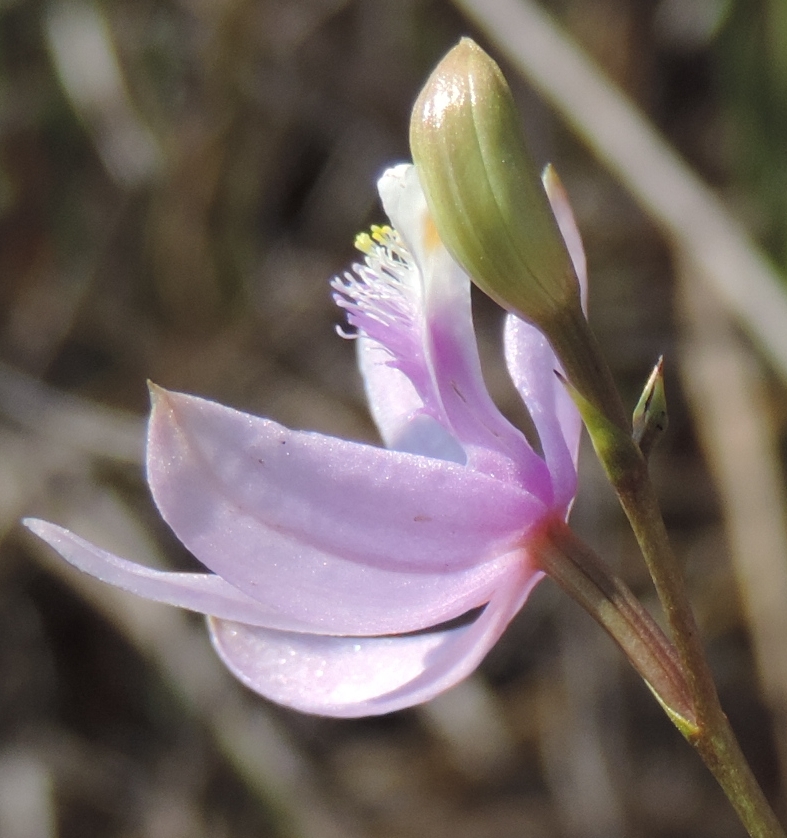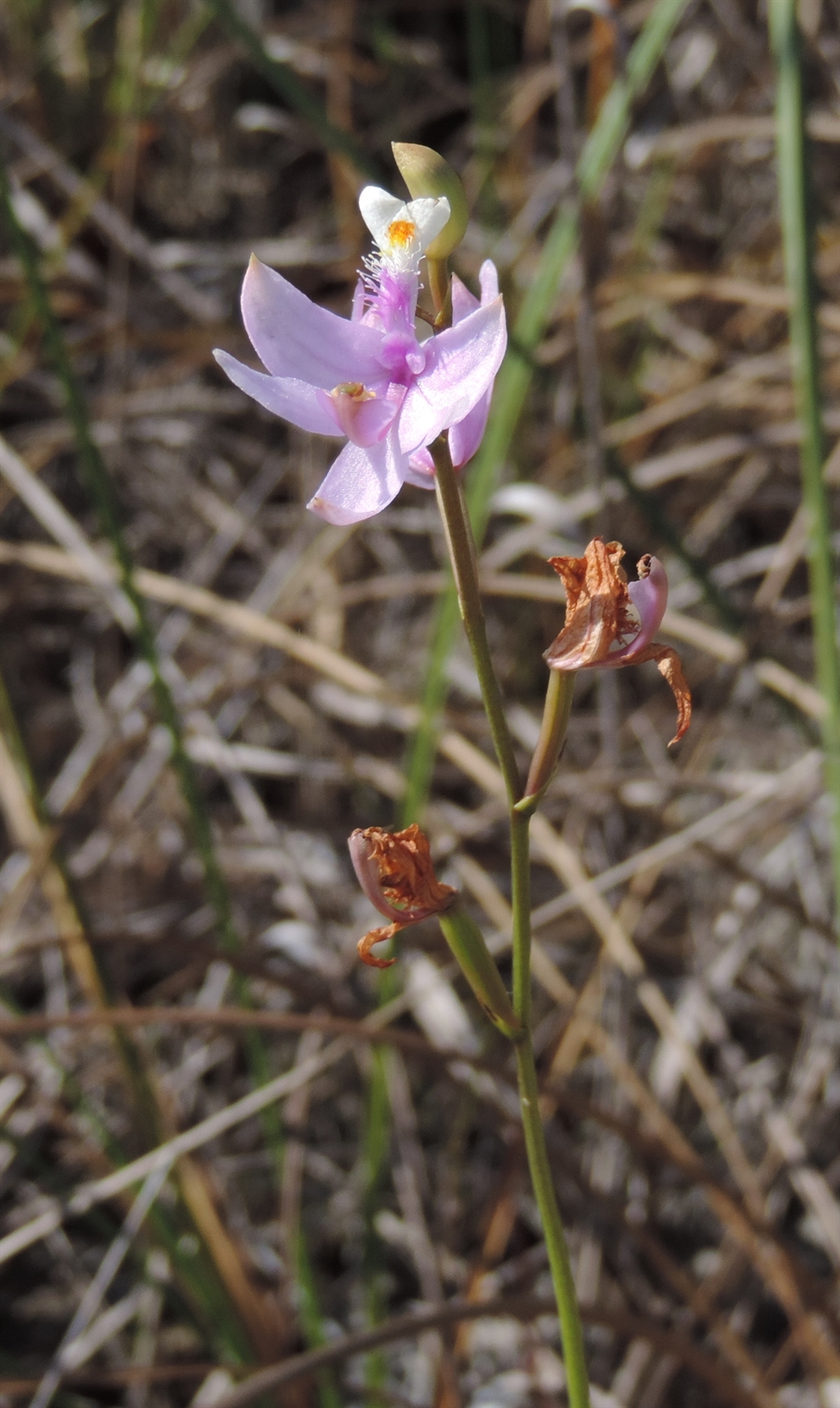Habit: Calopogon tuberosus grow as in wet soil. It produces a very short round stem that is covered with secondary stems that are expanded to form round pseudobulbs up to 4 cm thick. From the top of the pseudobulb thin, flattened linear leaves emerge that are up to 30 cm in length and 2 cm wide. The pseudobulb is typically below ground.
The complete, perfect, zygomorphic flowers are arranged in a terminal raceme up to 75 cm in height and contain 10-15 flowers that are produced in the winter between November and February. The flowers have bracts and the calyx has 3 pink sepals that turn darken with age. The corolla has 3 petals with one forming the labellum. The labellum is obscurely 3 lobed, pink with a white tip and pubescent along its upper half. Stamens and carpel fused together to form the column. The ovary is inferior. The fruit is a dark capsule at maturity up to c cm in length.
Calopogon tuberosus is different than most orchids in the flower is essentially upside down with the labellum to the upper side and the column to the lower half of the flower.
Habitat: Calopogon tuberosus grows in Fresh Water wetland areas in Pine Woodlands.
Distribution: Calopogon tuberosus occurs in the northern island groupings of the Lucayan Archipelago, Cuba, and the eastern half of Canada and the United States.
Medicinal/Cultural/Economic usage: While there are no medicinal uses of Calopogon tuberosus like all orchids they are prized for their beautiful flowers. ALL orchids are protected internationally by the Convention on the International Trade of Endangered Species (CITES) and should not be collected from the wild.


